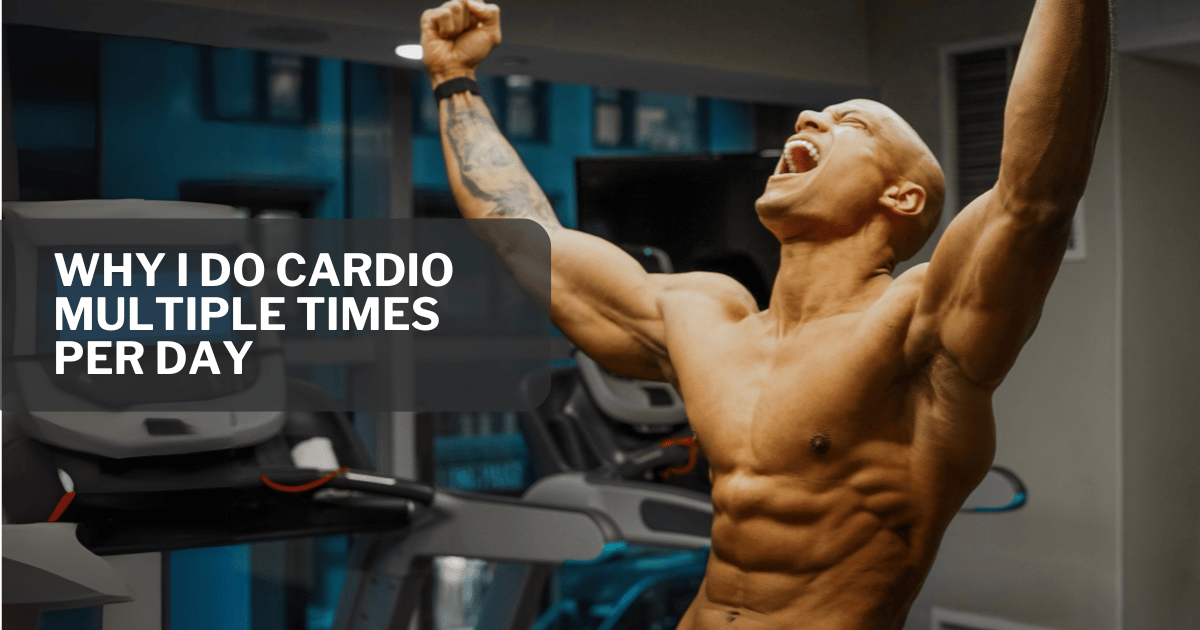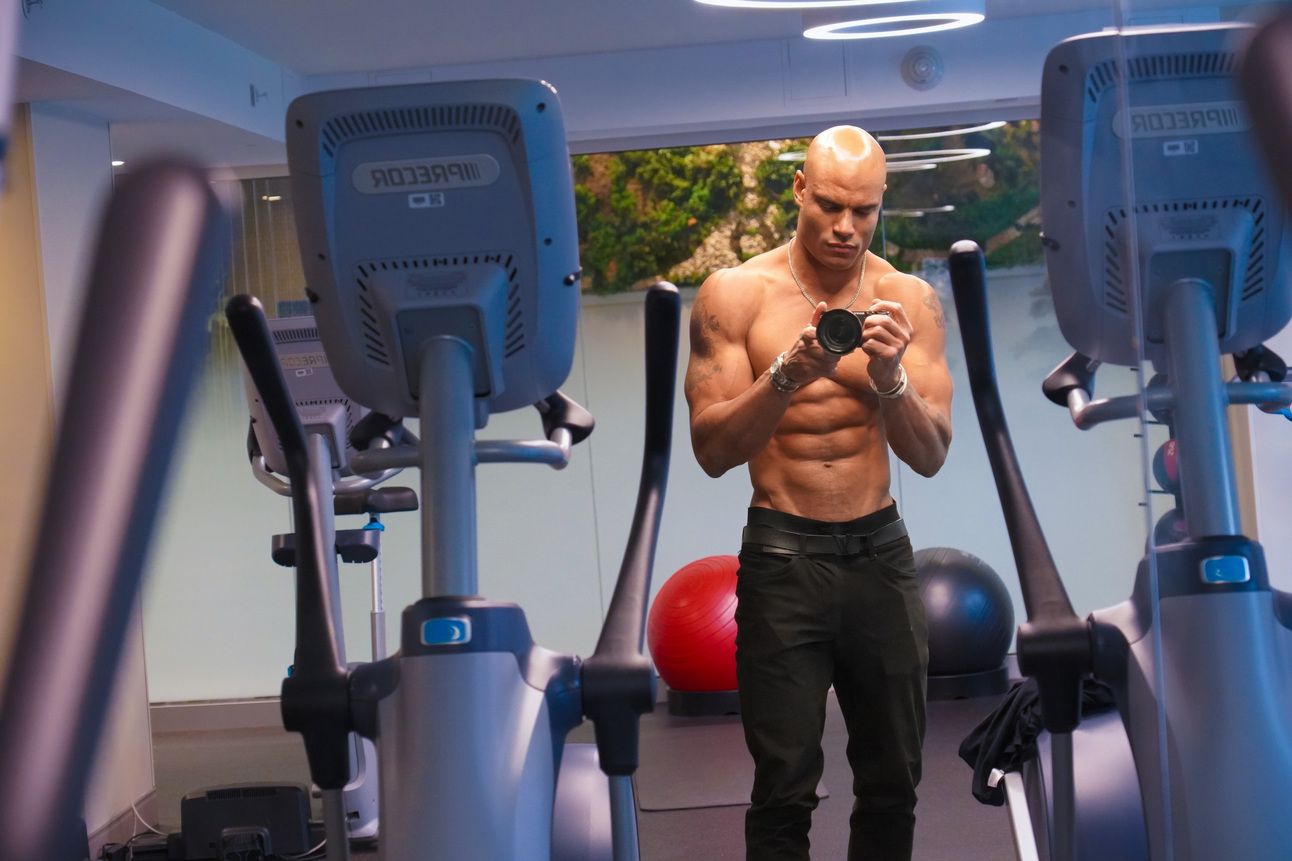- Big Money Methods
- Posts
- Why I Do Cardio Multiple Times a Day (And Why You Should Too)
Why I Do Cardio Multiple Times a Day (And Why You Should Too)

Image Courtesy of BMM
TLDR (Too Long Didn’t Read)
Why I Do Cardio Religiously: Cardio isn’t just about burning fat, it’s a tool for recovery, mental sharpness, and peak performance.
The Cardio/Muscle Myth: Cardio doesn’t kill gains when done right. Instead, it accelerates recovery and complements strength training.
My Daily Cardio Routine: Brandon Carter’s daily plan includes fasted LISS in the morning, NEAT throughout the day, and HIIT in the evening to optimize performance and fat loss.
The Science Behind Multiple Cardio Sessions: Splitting cardio into shorter sessions throughout the day improves energy, recovery, and overall calorie burn.
What You Should Do: Incorporate cardio based on your goals, whether for fat loss, recovery, or endurance, with actionable tips for scheduling and tracking.
Making Cardio Fun Is Key: Enjoyment matters, Brandon uses gaming on a Nintendo Switch or Superhot VR to make cardio sessions engaging and sustainable.
Why I Do Cardio Religiously
When people hear the word “cardio,” most think of it as a necessary evil, a grueling treadmill session reserved for cutting weight or burning fat.
But for me, cardio isn’t a chore. It’s a cornerstone of my fitness strategy, and I don’t just do it once a day, I do it practically 24/7.
Why? Because it works. Cardio, done right, doesn’t just burn calories.
It enhances recovery, sharpens your mind, and improves your overall performance, all while maintaining muscle gains.
Let me show you how I do cardio sustainably and effectively throughout the day, and why this approach is worth trying (if you can handle it).
The Cardio/Muscle Myth
The fitness community is divided on cardio.
You’ve probably heard myths like “cardio kills gains” or “if you lift, you don’t need it.”
But the truth is cardio isn’t your enemy. In fact, it can amplify your gains when used strategically.
Cardio improves blood flow, delivering oxygen and nutrients to your muscles to accelerate recovery.

Image Courtesy Of Big Money Methods
It enhances your work capacity, letting you lift heavier and longer.
And it keeps you lean, so the muscle you’ve worked so hard to build is more visible.
But here’s the key: the type of cardio and how you implement it matters.
Long, grueling sessions that leave you drained can interfere with recovery.
Short, purposeful sessions, on the other hand, complement your routine and unlock benefits that go far beyond fat loss.
My Daily Cardio Routine
Cardio isn’t something I tack onto my day as an afterthought.
It’s part of a system that fuels my performance, keeps me lean, and sharpens my mental focus. Here’s exactly how I structure it:
Morning Cardio: Fasted LISS
Every morning, I wake up and hit 20-30 minutes of low-intensity steady-state (LISS) cardio. This is usually on a treadmill at an incline or a stationary bike.
Why fasted? Because when your glycogen stores are low from fasting overnight, your body taps into fat for fuel.
It’s one of the easiest ways to ensure you’re burning fat from the start of the day.
This session isn’t about speed or intensity, it’s about staying in the fat-burning zone, which is around 60-70% of your max heart rate. I track it with my Apple Watch to make sure I’m on point.
Fasted cardio also sets the tone for my entire day.
By the time I finish, my metabolism is fired up, my head is clear, and I’m already ahead of most people who are still snoozing.

Image Courtesy Of Big Money Methods
Throughout the Day: NEAT
Most people overlook how much movement they can add to their day outside the gym.
This is where non-exercise activity thermogenesis (NEAT) comes in. It’s just a fancy way of saying “burn calories by staying active all day.”
I aim for 15,000 to 20,000 steps daily, which sounds like a lot but is surprisingly easy when you’re intentional about it. Here’s how I make it work:
I’ll walk three or four train stops instead of hopping on right away.
At the office, I take the stairs instead of the elevator.
I use a standing desk, so I’m not sitting for hours on end.
If I have a meeting, I turn it into a walking meeting, just like Steve Jobs used to do.
By tracking my steps and staying consistent, I can burn an extra 500-1,000 calories a day.
That’s on top of what I do in the gym. NEAT is the easiest way to stay lean without even realizing you’re working.
Evening Cardio: HIIT
This is where I turn up the intensity.
At the end of the day, I do 15-20 minutes of high-intensity interval training (HIIT).
This could be sprints, jump squats, battle ropes, anything that gets my heart rate sky-high and keeps it there for short bursts.
HIIT is a game-changer for fat loss because it doesn’t just burn calories during the session.
It ramps up your metabolism for hours afterward, so you’re still burning fat long after you’ve left the gym.
Plus, HIIT complements weight training perfectly. It builds endurance and improves your overall athletic performance without eating into your lifting gains.
The Science Behind Multiple Cardio Sessions
Splitting cardio into multiple sessions isn’t just convenient, it’s backed by science.
Shorter sessions spread throughout the day help manage stress hormones like cortisol, improve insulin sensitivity, and keep energy levels consistent.

Image Courtesy Of Big Money Methods
Increased Energy
Short bursts of cardio stimulate endorphins and improve circulation, which means you feel more awake and focused. This is especially helpful if you have a demanding job or long hours of sitting.
Better Recovery
Cardio improves blood flow, which accelerates the removal of metabolic waste from muscles after lifting. This speeds up recovery and reduces soreness, so you’re ready to hit the weights again faster.
Higher Caloric Burn
Frequent, shorter sessions keep your metabolism elevated throughout the day, leading to higher overall caloric burn compared to a single long session.
What You Should Do For Cardio
You don’t have to copy my routine exactly, but here’s how you can incorporate multiple cardio sessions into your day:
Step 1: Identify Your Goals
Are you trying to burn fat, build endurance, or improve recovery? Your cardio sessions should align with your specific fitness goals.
For Fat Loss: Focus on a mix of low-intensity cardio in the morning and HIIT in the afternoon. This combination torches calories and maximizes fat burning.
For Recovery: Stick to low-intensity sessions before and after your lifting workouts.
For Endurance: Incorporate steady-state cardio, like cycling or jogging, to build stamina over time.
Step 2: Schedule Short Sessions
Start with two sessions a day, each lasting 15–20 minutes. You don’t need fancy equipment or a gym membership, walking, jumping rope, or even dancing can be effective.
Pro Tip: Use these sessions as “bookends” to your day, one in the morning to set the tone and one in the evening to wind down.
Step 3: Track Your Progress
Keep an eye on how cardio affects your energy, performance, and recovery. Apps like MyFitnessPal or WHOOP can help you monitor heart rate, calories burned, and recovery metrics.
Making Cardio Fun Is Key
Let’s be real, most people hate cardio. And if it’s boring, you’re not going to stick with it. That’s why I’ve found ways to make cardio enjoyable…even fun.
One of my favorite hacks? Gaming while doing cardio.
When I’m on the treadmill, I’ll pull out my Nintendo Switch.
I’ll be battling in Super Smash Bros. or speeding through Mario Kart, and the distraction keeps my mind off the clock and makes the time fly.
You can also take it to another level with Superhot VR on the Oculus. This game is like a high-intensity workout disguised as a virtual reality experience.
You’re constantly dodging, ducking, and throwing punches to progress through the levels. It’s intense, keeps your heart rate up, and makes you feel like a total badass.
The BMM Takeaway
Cardio doesn’t have to be soul crushing.
When done strategically, it’s a powerful tool that enhances your performance, accelerates recovery, and sharpens your mindset.
By splitting cardio into multiple short sessions throughout the day, you’ll keep your energy high, burn more calories, and build the kind of mental toughness that sets you apart.
Don’t overcomplicate it. Start small, stay consistent, and let the results speak for themselves.